V&A Dundee is "a conversation between nature and artefact" says Kengo Kuma
In this exclusive video interview, Japanese architect Kengo Kuma reflects on the relationship between his V&A Dundee museum building and the sea.
Part of a £1 billion renovation scheme for Dundee's waterfront, the dark, ridged concrete form of the V&A Dundee looms out over the Firth of Tay like a craggy rock face.
"The location for this project is very unique, between water and land," Kuma says in the movie, which Dezeen filmed in Dundee.
"We tried to show the uniqueness of this location by designing a sea cliff, between the water and the land, which is the result of a conversation between nature and artefact."
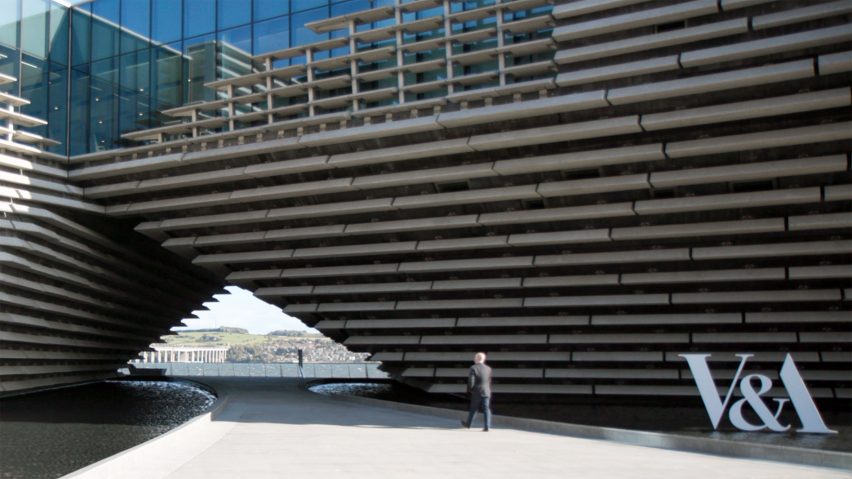
Creating a man-made form that could echo the wind-swept process of erosion from crashing waves required a new level of technology and engineering.
Kuma worked with engineers from Arup to produce a 3D model that could be used to test and analyse various forms for the building.
"We tried to achieve that natural, organic quality by designing this unique facade and the unique shape," Kuma explains. "New technologies can make the organic form possible."
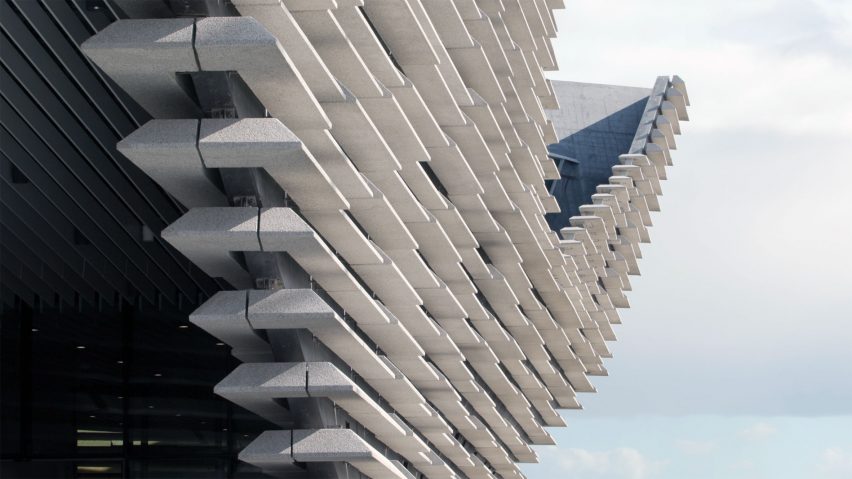
The angled concrete louvres that wrap around the entire structure had to be individually modelled to appear as random, as if they had been chipped away at by wind and rain for centuries.
The museum's final shape is a twisting double volume that joins at the topmost level to create a building that appears to have an eroded cave passage leading the Tay to the city.
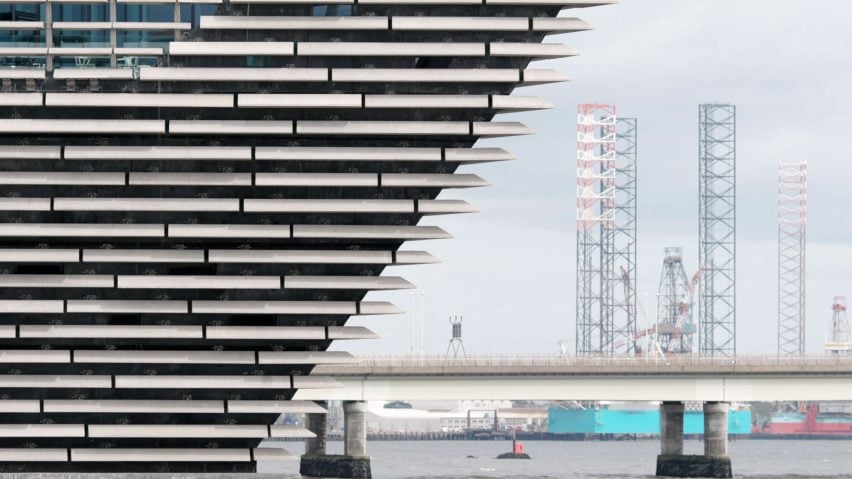
"The big ambition of this urban design is to reconnect the city and the waterfront," says Kuma.
"The city in the 21st century needs that kind of reconnection with nature, because without nature people cannot survive. This building is a very good example of creating a new gate between city and nature."
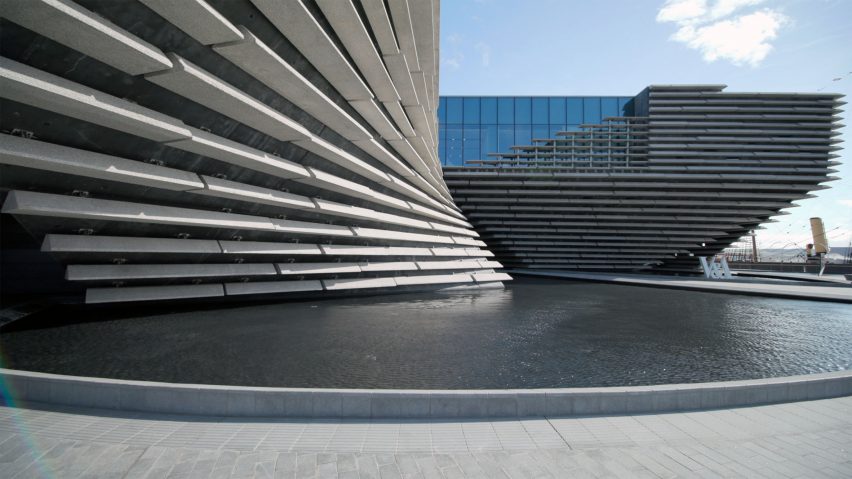
Along with reinstating connections between the city and its surrounds, Kuma hopes his museum will help foster conversations with and between Dundonians.
"I think museums should be a part of the community," he explains. "The museum is not only for art, the museum should draw people together and activate the communication between the people."
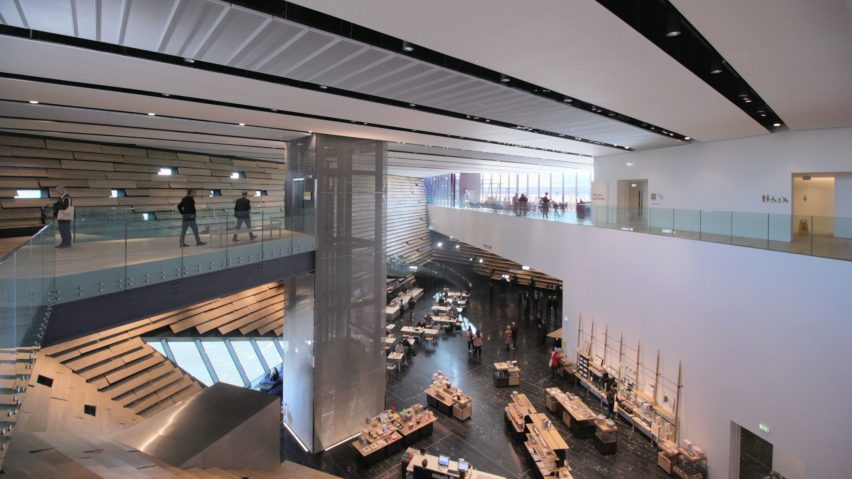
Visitors enter the museum through a double-height main hall with a cafe and ample seating. Benches line the long sweeping staircase that leads to the first floor gallery spaces, and a book-shelf lined seating area where visitors can sit and read. The restaurant has expansive views out over the water.
"The geometry of the space is very generous and very informal to make people relax," Kuma explains. "We used natural materials as much as possible."
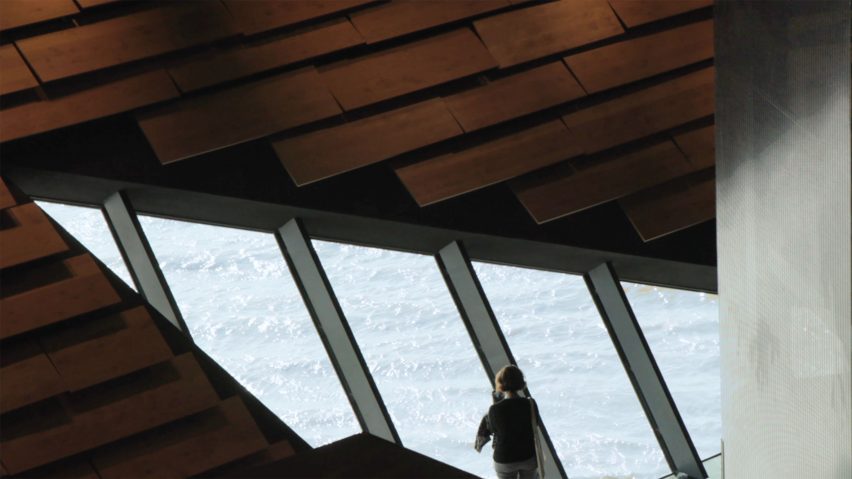
Irregular oak-veneered panels line the sloping interior walls. The light wood is in contrast to the dark Carlow Irish Blue limestone, littered with fossils, that clads the hall floor and staircase. Pearly chips of mussel shell were mixed in with the white concrete used for surfaces around the museum.
Natural materials were a conscious decision on the part of Kuma, a Japanese architect working in Scotland for the first time. The V&A Dundee, he says, is part of a cross-cultural sympathy between the two counties.
"Scotland and Japan, for both cultures nature is very important. They are both learning many things from nature," he says.
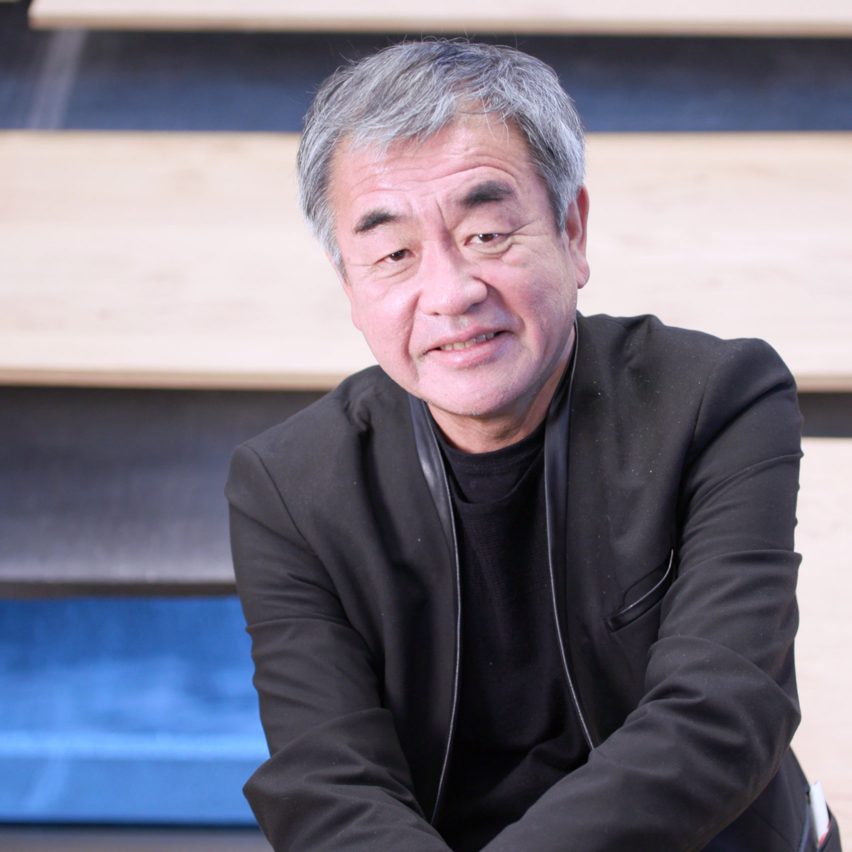
The V&A Dundee is Kuma's first building in the UK. The Tokyo-based architect is currently working on an aquatics centre for Copenhagen's waterfront and a plant-covered hotel on the bank of Paris' river Seine.
This movie was filmed by Dezeen in Dundee.